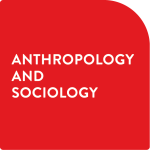Abstract
How does an individual tiger, leopard, or lion in India come to be identified as the big cat that is guilty of deliberately killing humans? I demonstrate ethnographically in this paper through long-term research with hunters, conservationists, bureaucrats and victims of attacks by big cats, that there is no single overarching modality for arriving at such a beastly identification. Yet, the official government guidelines and legal strictures require that this identification has been correctly made and fully verified anterior to the hunt. All actors involved must, therefore, pretend that the right big cat – the so called ‘man-eater’ – has been neutralised. Through an account of the impossibility of beastly identification, I argue that in the government of big cats we see in stark relief the limits of bureaucratic action and conservation. What operates, instead, is a form of knowing the nonhuman other that is localised, personalised, affective, and momentary. Such forms of knowledge and living-besides should be centred in the age of the Anthropocene.
About the Speaker
Nayanika Mathur is an Associate Professor in the School of School of Anthropology & Museum Ethnography at the University of Oxford. She specialises in South Asia Anthropology with wide-ranging research and teaching interests in the anthropology of politics, development, environment, law, human-animal studies, and research methods. She is currently engaged in two major research projects: writing a book centred upon human-big cat conflict in South Asia, tentatively entitled Crooked Cats: Human-Big Cat Entanglements in the Anthropocene; and a new project that studies the effects of the use of new technologies in the everyday working of government in India.




